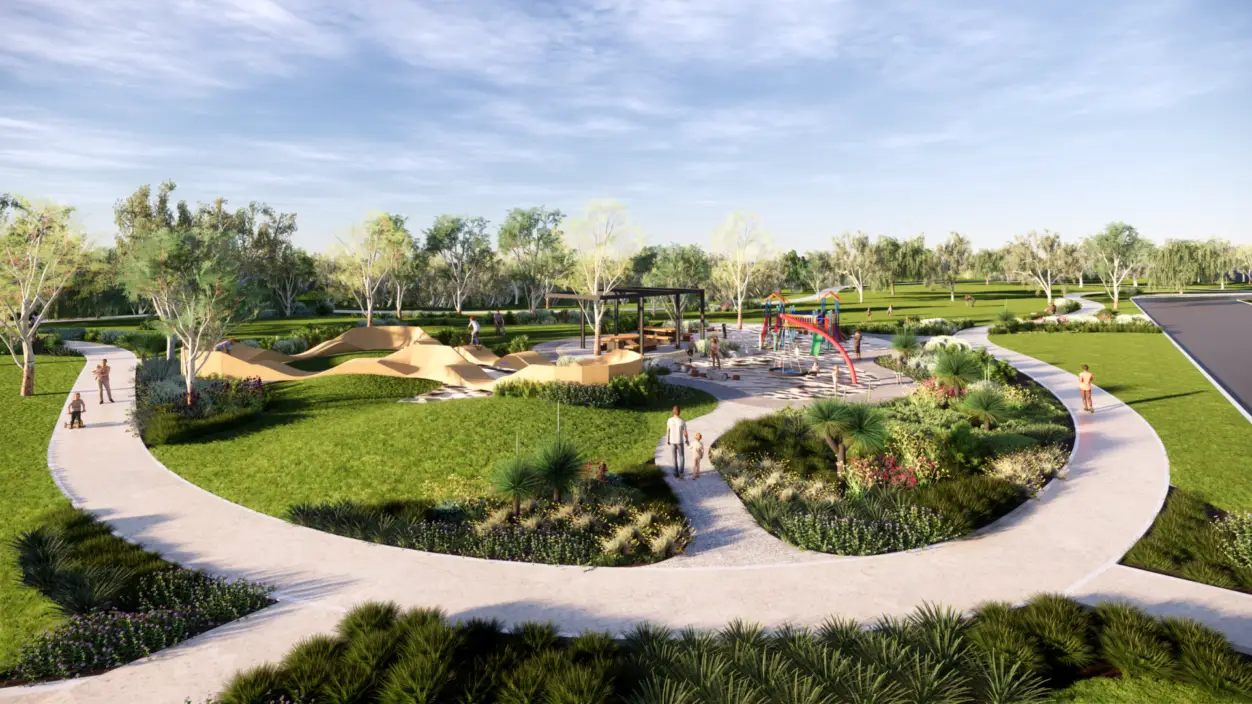When people visit public spaces in a town or city, we automatically form an impression of the identity of that place, and whether or not we want to come back. When public space is poorly designed, it feels unsafe and alienating. People are unlikely to return to or think well of poor public spaces, crimes occur more often, and an opportunity to benefit the community is missed. The service of landscape design is in large part about providing fitting identities to spaces. The personal identities of private gardens are easier to define, but identity is an important part of large-scale shared spaces as well, and designing for a whole community presents its own set of challenges.
Cities with public spaces that feel comfortable, safe, and welcoming, have communities that are happier, more active, and productive. It’s our philosophy that approaches to public space design should not leave this to chance. TDL is focused on concrete methods of achieving the wider community benefits that good design affords. Here are some of the principles our public design methodology is based on.
1. Design for safety
There is growing evidence that public spaces must feel safe in order to be safe. While some believe the approach of enhancing digital surveillance improves feelings of safety, a more effective and less expensive approach is to invite ‘natural’ surveillance. This means increased visibility to others, good lighting, populated overlooking structures, and fewer obstacles. Inviting more use through facilities and events can also create a positive feedback loop. The safer and more welcoming a space feels, the more people will frequent it, the safer and more welcoming the space will feel. Safety is the most fundamental requirement for successful public spaces.
2. Design for the community’s needs
Beyond the baseline standard of feeling safe, what makes a space engaging and comfortable? It takes into account the community it is serving, its immediate surroundings, and pre-existing qualities, and then accommodates them. There is no one-size-fits-all approach to public spaces, but considering and involving the community from the start is a surefire way to improve the chances that a space will be well used & beneficial. The design comes first, we have to answer the questions: “how should this space be used” and “how do we encourage that kind of use” before we think about planting, structures, and aesthetics.
3. Public spaces should make the most of vegetation
There is growing recognition of the benefits of more tree-dense cities and suburbs. Adding appropriate greenery to public spaces, and lining streets with trees assists in lowering temperatures, improving air quality, and can lower people’s stress levels. There is evidence that well-designed green-spaces reduce crime, and even that exercise is more beneficial to health when it is done in greener areas. It almost goes without saying, but the appropriate use of trees is essential to our public landscape design projects. Appropriate use here means choosing the right species, maturity and density of plantings to keep spaces visually legible, and surviving in the area without causing safety or maintenance issues.
4. Unique spaces for unique locations
Successful public landscapes must be designed in consideration of their surroundings. Local businesses, residential areas, community makeups, and landmarks all affect how spaces will be traversed and used. Thinking about the surrounding area can help us to anticipate desire paths and how people might use the space outside of its designated purpose, so that the surrounding spaces are more easily accessible, enhancing the wider area.
5. Flexibility & diversity
Successful landscapes are flexible in their use and serve as many people in the community as well as possible. This means considering how the use of the space can and should change over the course of the day, the week, and the year. Will it be frequented by workers during the day and children in the afternoon? Will weekend or weekday events be held or will it be a quiet place for the locals to walk their dogs? How will the space be used in summer or winter? To get the most out of public spaces, all of these things should be considered.
There are so many things to consider when designing a successful space. TDL’s commercial landscape architects and designers focus on transforming spaces for years of success by developing a deep understanding of how communities and landscapes interact. Creative application of green infrastructure solutions is what sets us apart and helps us create spaces with a genuine appeal that lasts for years. A green space is a living environment and should be designed and built to suit the specific needs of the community it serves. If you’re looking for assistance with a landscape project, or more information about TDL’s design approach contact us today on 08 9441 0200.
You might also like:

